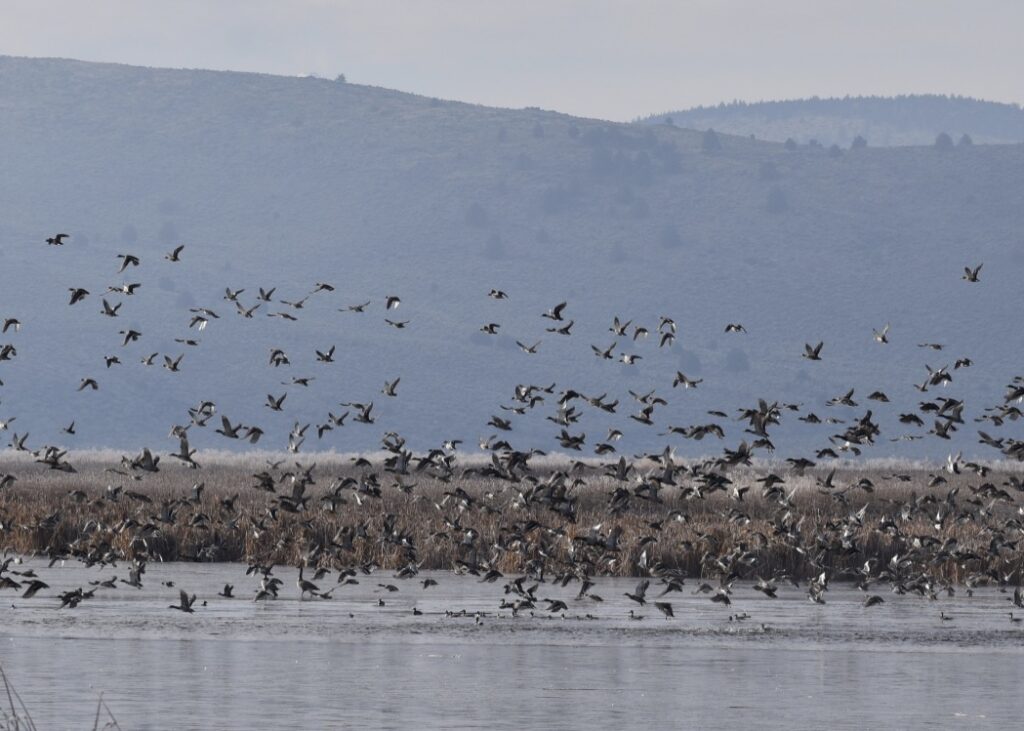
An outboard engine spasms to life behind me, a great rattling noise against the serenity of the lake, then disintegrates into a thousand ruffles and throbbing palpatations. I turn to identify the sound; there’s no engine, only a flock of geese exploding into flight, wings percussing the water membrane, beating at air, thrumming with life.
Today I am exploring the areas around Lower Klamath Lake, west of Tule Lake.
A year has passed, and I’ve returned—alone this time—hoping to get a better understanding of the land and its interconnections. These are not the snow geese that initially interested me in the region, but I’m still awed by the constellations of birds—a community in flight. It’s a sharp contrast from the relative sparsity of birds on the rest of the lake. Last year I wrote it off as a fluke, but the repetition is concerning.
The decline in migrating bird populations in the Klamath Basin can be linked directly to the reduction of wetlands in the area, which can be linked back to a shortage of water. Over the past 60 years, peak numbers of migrating birds dropped over 80%, which is the same percentage of water that has been drained from the lakes. This link in the Pacific Flyway simply can no longer sustain the populations it once could, at least not without water.
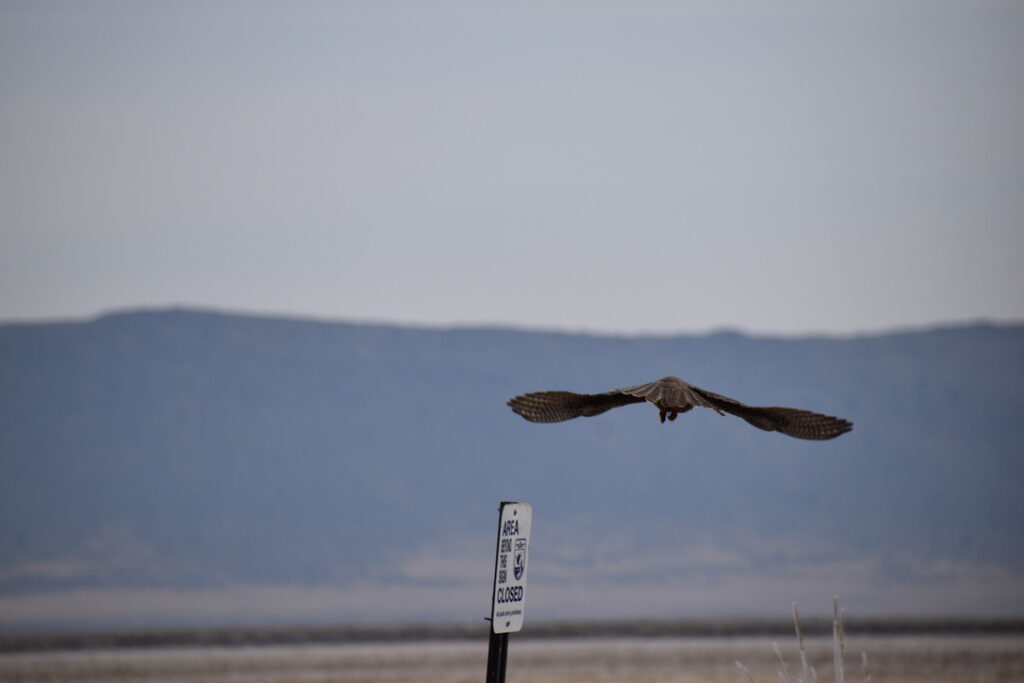
The source of the water shortage goes back to 1882, less than a decade after the Modoc War, when farmers introduced the first irrigation ditch from the Link River just north of Klamath Falls. From that initial reshaping of the earth for human purposes, the canals and irrigation ditches grew quickly.
At first these ditches only tapped the rivers, which replenished each spring from winter snowfall, but after a dry winter in 1887-88, farmers began to tap into the larger water supply provided by the lakes.
As more water flowed through the canals, more land was opened to development, which led in turn to a greater need for water. By 1905, the US Bureau of Reclamation had secured all the water rights needed to begin a major water project.
The Klamath project included several new dams and canals which restricted the free flow of water and nutrients. It was expanded during the 1920s to increase irrigable lands in the northwest portion of the basin, and again in the 1940s in the area around Tulelake, draining the marshes and building new canals.
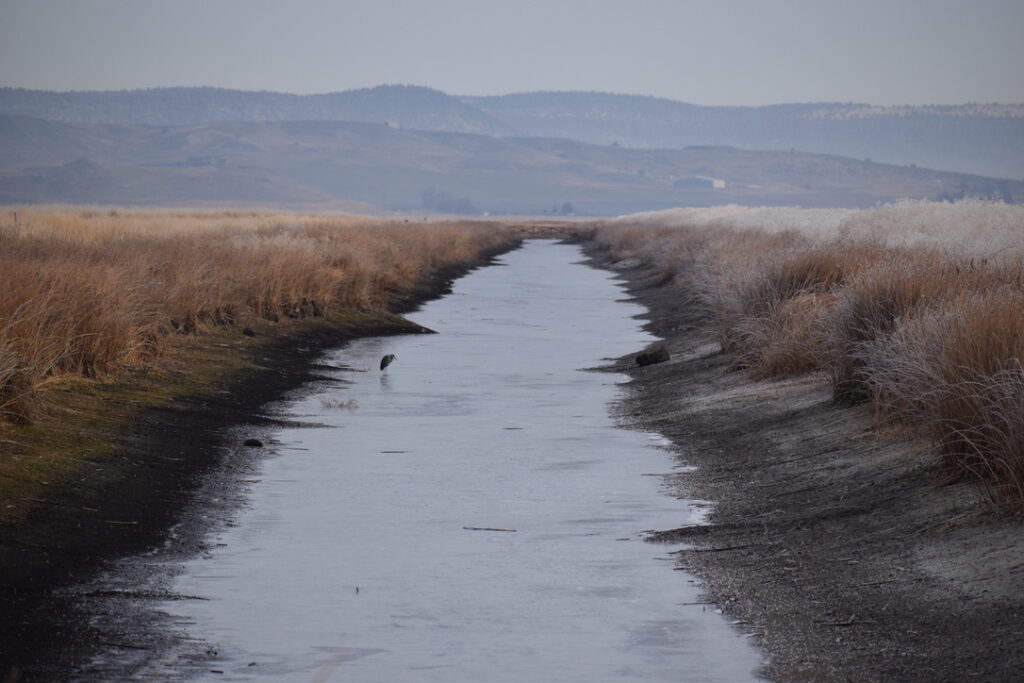
As a result of the Klamath Project, the US Bureau of Reclamation manages water in this region, and like many of the water projects in the Southwestern United States, the water rights are over-allocated. Many of the rivers were measured during especially wet years, which led to false expectations and impossible promises. In the resulting battles between conservationists and farmers, Reclamation tends to side with agriculture, failing to recognize that the long-term success of agriculture is dependent on the health of the land, that the very soil that makes this region so productive for farming is the result of thousands of years of ecological processes that are being systematically destroyed. It’s as if we are shunting blood away from our hearts in greater and greater amounts in order to provide it to the muscles; fine while the supply is abundant, but potentially fatal when it is not.
The flock settles down in the same spot they just departed, shuffling their wings like they are shaking out residual adrenaline. Whatever spooked them appears to be gone for now. Possibly a false alarm, spread from one bird to another like ripples in a pond. If there’s one lesson that wilderness teaches time and again, it’s that small stimuli can domino into large consequences in a hurry.
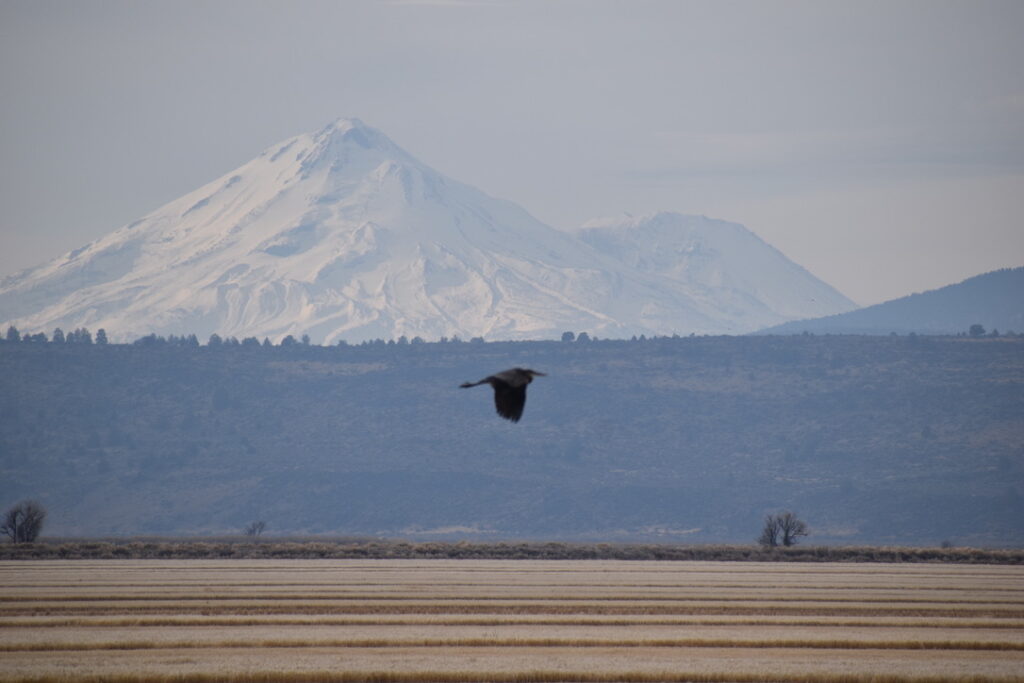
Further east, trees with thick tangles of leafless branches line the far side of an irrigation canal. Each tree holds a bird of prey, some hold two and three. I park again and inspect the birds through the zoom lens on my camera—Bald eagles, mostly, many with the patterned brown heads that mark them as juveniles.
One startled bird swoops away from the row of trees. It beats its wings to gain altitude, then sets them to glide away. The majesty of its soaring captivates me—the poised stillness in the midst of speed. With no other trees in the nearby farmland, it chooses a sluice gate for a perch. Below the gate is a meagre supply of water that has iced over in the canal.
The Klamath Basin holds the largest concentration of wintering Bald Eagles—nearly 500 of them—in the lower 48 states. The eagles are often touted as a success story of the massive conservation effort during the 1980s that brought them out of endangered status, but as recently as the 1960s this region was home to over a thousand eagles. Whatever success conservationists may have earned in rescuing the eagles from the brink of extinction is tempered within that larger context.
Like other migratory birds, eagles travel south to the Klamath Basin for its abundant winter food, which is mostly made up of the abundant waterfowl. They face a number of threats from the proliferation of farms in this region, from pesticide use to loss of old-growth habitat. Their recent revival can be traced in part to the removal of DDT and other dangerous insecticides in the latter part of the twentieth century. These chemicals aggregate as they make their way up the food chain and accumulate in the birds’ tissues, causing sickness and death. Other pesticides and chemical fertilizers that are still in use, while not as acute in their fatality, are nonetheless damaging to the birds health and habitat.
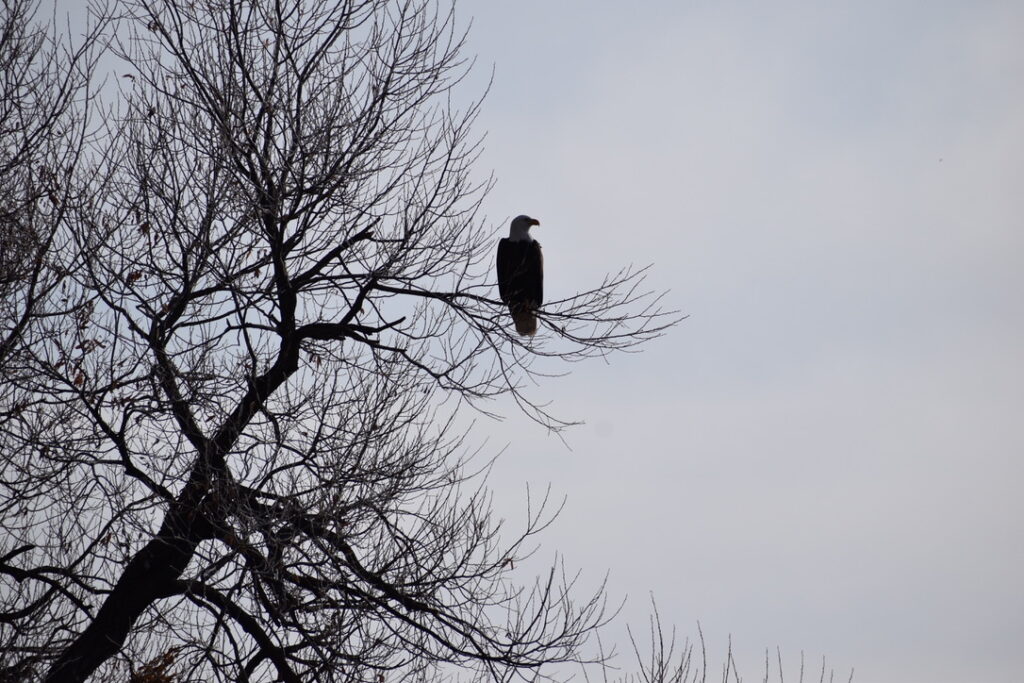
Nearby Bear Valley National Wildlife Refuge provides one of the last old-growth forests in the region. Of the 500 eagles that hunt in the basin lowlands during the day, 60% of them roost at Bear Valley in the nights. The refuge is an ideal habitat, with northeast-facing slopes and strong canopies that protect them from winter winds. The remainder of the birds have to find other shelter among the sparse trees that line the sprawling farms and ranches.
At first blush, the use of land and water for farms seems intractable. Humans need food, and food requires water. But what food? And how much water? The major agricultural products of the Klamath Basin are livestock and alfalfa, the latter of which is used to feed livestock. Both require massive amounts of water and strain soil health. Any number of other crops would both increase the production of total calories delivered to tables and reduce the impacts on wildlife like geese and eagles.
The large-scale irrigation of the basin poses another problem: the region sits on impermeable volcanic deposits. That traps salts and chemicals in the soil as the water evaporates, concentrating them to dangerous levels leaving the land unusable, much like what is happening in the Tulare Lake basin in central California (and which is another degraded stop along the Pacific Flyway).
During much of the twentieth century, coal miners used canaries to sense the presence of carbon monoxide and other dangerous, odorless gases: if the canary died, the miners knew they were in danger. Could the Bald Eagle be our canary in the ecological coal mine? Will we pay attention when it stops singing? Lower Klamath Lake provides habitat for another 25 species that are considered threatened or sensitive. What if they all go silent?
As Aldo Leopold wrote about the future of his children in A Sand County Almanac, “I hope to leave them good health, an education, and possibly even a competence. But what are they going to do with these things if there be no more deer in the hills, and no more quail in the coverts? No more snipe whistling in the meadow, no more piping of widgeons and chattering of teal as darkness covers the marsh; no more whistling of swift wings when the morning star pales in the east? And when the dawn-wind stirs through the ancient cottonwoods, and the gray light steals down from the hills over the old river sliding softly past its wide brown sandbars—what if there be no more goose music?”
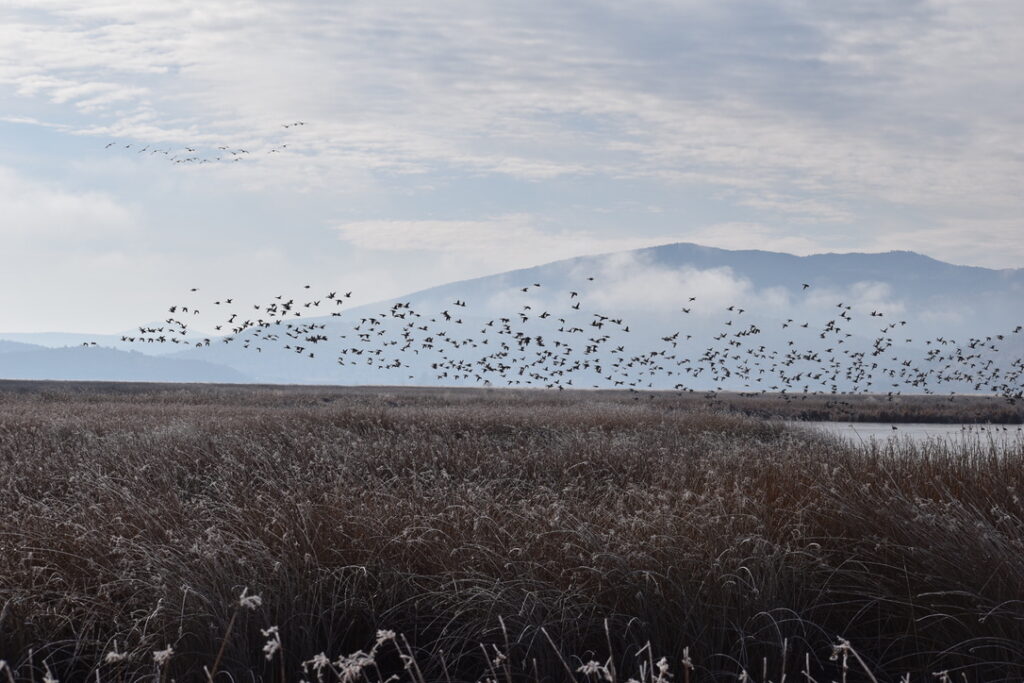
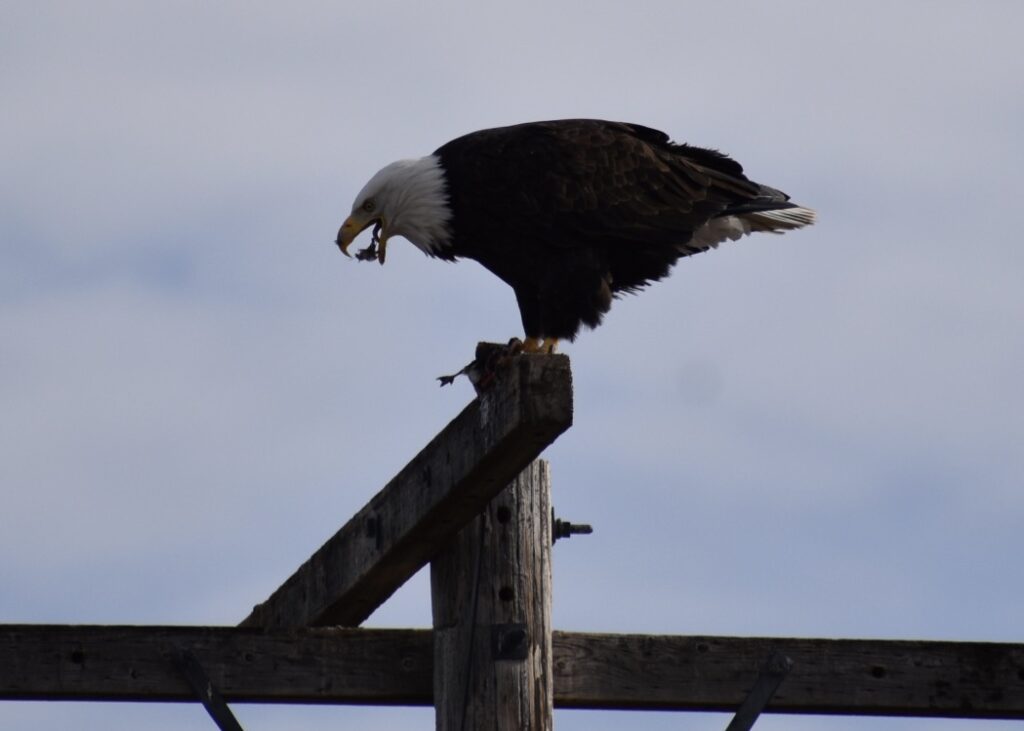
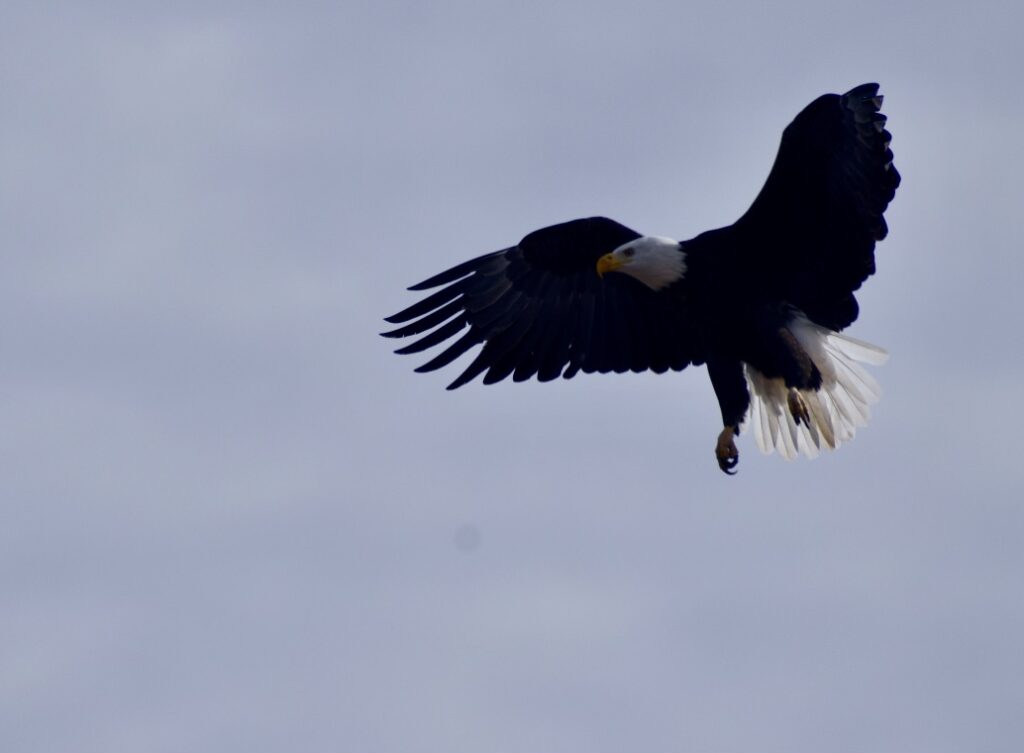
Nice work. Is this what you are planning to submit to Nick’s class?
Steven
Thanks Steven, no, I still have to work on that.